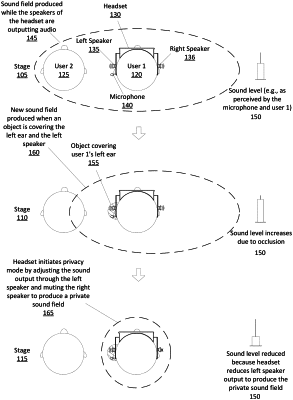| CPC G06F 3/165 (2013.01) [G06F 3/017 (2013.01); H04R 3/00 (2013.01); H04R 2430/01 (2013.01)] | 23 Claims |

|
1. A method performed by a processor of a computer system comprising a headset, the method comprising:
driving an extra-aural speaker of the headset with an input audio signal to output sound into an environment;
determining that the extra-aural speaker is at least partially covered;
in response to determining that the extra-aural speaker is at least partially covered,
determining a gain based on an estimated change to a perceived sound level of the sound caused by the at least partial covering of the extra-aural speaker; and
producing an adjusted audio signal by applying the gain to the input audio signal, which when used to drive the extra-aural speaker produces sound that compensates for the estimated change to the perceived sound level.
|